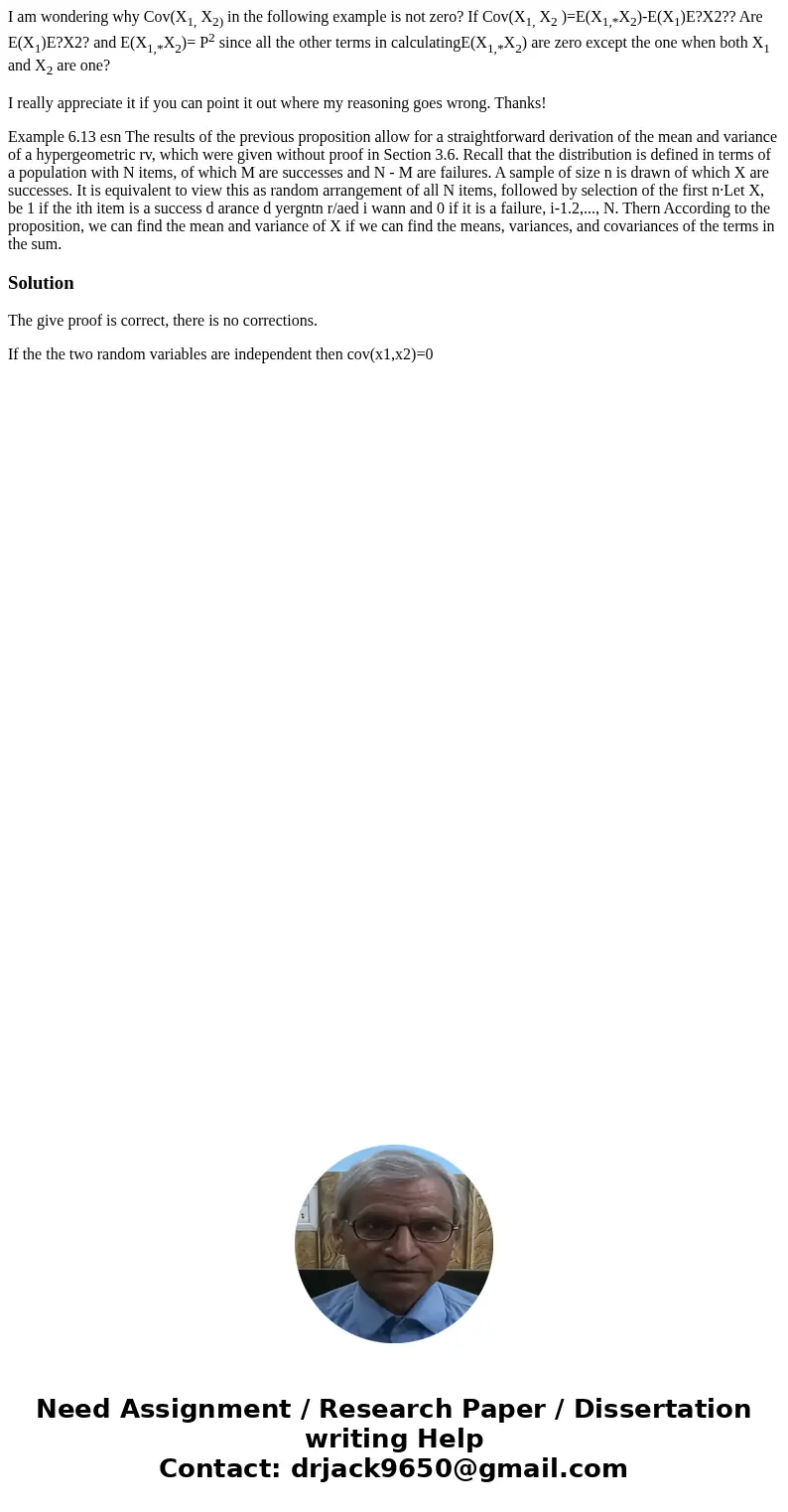I am wondering why CovX1 X2 in the following example is not
I am wondering why Cov(X1, X2) in the following example is not zero? If Cov(X1, X2 )=E(X1,*X2)-E(X1)E?X2?? Are E(X1)E?X2? and E(X1,*X2)= P2 since all the other terms in calculatingE(X1,*X2) are zero except the one when both X1 and X2 are one?
I really appreciate it if you can point it out where my reasoning goes wrong. Thanks!
Example 6.13 esn The results of the previous proposition allow for a straightforward derivation of the mean and variance of a hypergeometric rv, which were given without proof in Section 3.6. Recall that the distribution is defined in terms of a population with N items, of which M are successes and N - M are failures. A sample of size n is drawn of which X are successes. It is equivalent to view this as random arrangement of all N items, followed by selection of the first n·Let X, be 1 if the ith item is a success d arance d yergntn r/aed i wann and 0 if it is a failure, i-1.2,..., N. Thern According to the proposition, we can find the mean and variance of X if we can find the means, variances, and covariances of the terms in the sum.Solution
The give proof is correct, there is no corrections.
If the the two random variables are independent then cov(x1,x2)=0

 Homework Sourse
Homework Sourse